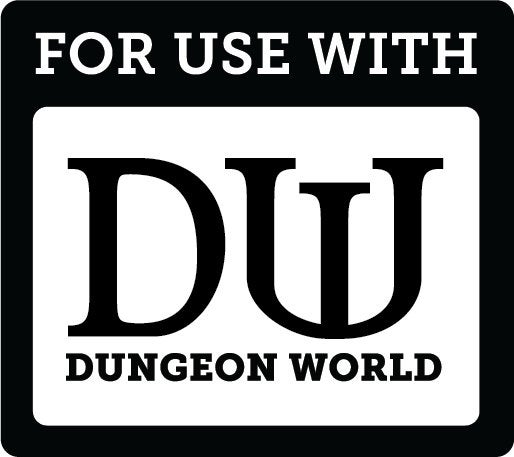Weapons
Weapons don’t kill monsters, people do. That’s why weapons in Dungeon World don’t have a listed damage. A weapon is useful primarily for its tags which describe what the weapon is useful for. A dagger is not useful because it does more or less damage than some other blade. It’s useful because it’s small and easy to strike with at close distance. A dagger in the hands of the wizard is not nearly so dangerous as one in the hands of a skilled fighter.
Weapon Tags
Weapons may have tags that are primarily there to help you describe them (like Rusty or Glowing) but these tags have a specific, mechanical effect.
- n Ammo: It counts as ammunition for appropriate ranged weapons. The number indicated does not represent individual arrows or sling stones, but represents what you have left on hand.
- Forceful: It can knock someone back a pace, maybe even off their feet.
- +n Damage: It is particularly harmful to your enemies. When you deal damage, you add n to it.
- Ignores Armor: Don’t subtract armor from the damage taken.
- Messy: It does damage in a particularly destructive way, ripping people and things apart.
- n Piercing: It goes right through armor. When you deal damage with n piercing, you subtract n from the enemy’s armor for that attack.
- Precise: It rewards careful strikes. You use DEX to hack and slash with this weapon, not STR.
- Reload: After you attack with it, it takes more than a moment to reset for another attack.
- Stun: When you attack with it, it does stun damage instead of normal damage.
- Thrown: Throw it at someone to hurt them. If you volley with this weapon, you can’t choose to mark off ammo on a 7–9; once you throw it, it’s gone until you can recover it.
Weapons have tags to indicate the range at which they are useful. Dungeon World doesn’t inflict penalties or grant bonuses for “optimal range” or the like, but if your weapon says Hand and an enemy is ten yards away, a player would have a hard time justifying using that weapon against him.
- Hand: It’s useful for attacking something within your reach, no further.
- Close: It’s useful for attacking something at arm’s reach plus a foot or two.
- Reach: It’s useful for attacking something that’s several feet away—maybe as far as ten.
- Near: It’s useful for attacking if you can see the whites of their eyes.
- Far: It’s useful for attacking something in shouting distance.
Weapon List
The stats below are for typical items. There are, of course, variations. A dull long sword might be -1 damage instead while a masterwork dagger could be +1 damage. Consider the following to be stats for typical weapons of their type—a specific weapon could have different tags to represent its features.
- Ragged Bow near, 15 coins, 2 weight
- Fine Bow near, far, 60 coins, 2 weight
- Hunter’s Bow near, far, 100 coins, 1 weight
- Crossbow near, +1 damage, reload, 35 coins, 3 weight
- Bundle of Arrows 3 ammo, 1 coin, 1 weight
- Elven Arrows 4 ammo, 20 coins, 1 weight
- Club, Shillelagh close, 1 coin, 2 weight
- Staff close, two-handed, 1 coin, 1 weight
- Dagger, Shiv, Knife hand, 2 coins, 1 weight
- Throwing Dagger thrown, near, 1 coin, 0 weight
- Short Sword, Axe, Warhammer, Mace close, 8 coins, 1 weight
- Spear reach, thrown, near, 5 coins, 1 weight
- Long Sword, Battle Axe, Flail close, +1 damage, 15 coins, 2 weight
- Halberd reach, +1 damage, two-handed, 9 coins, 2 weight
- Rapier close, precise, 25 coins, 1 weight
- Dueling Rapier close, 1 piercing, precise, 50 coins, 2 weight
